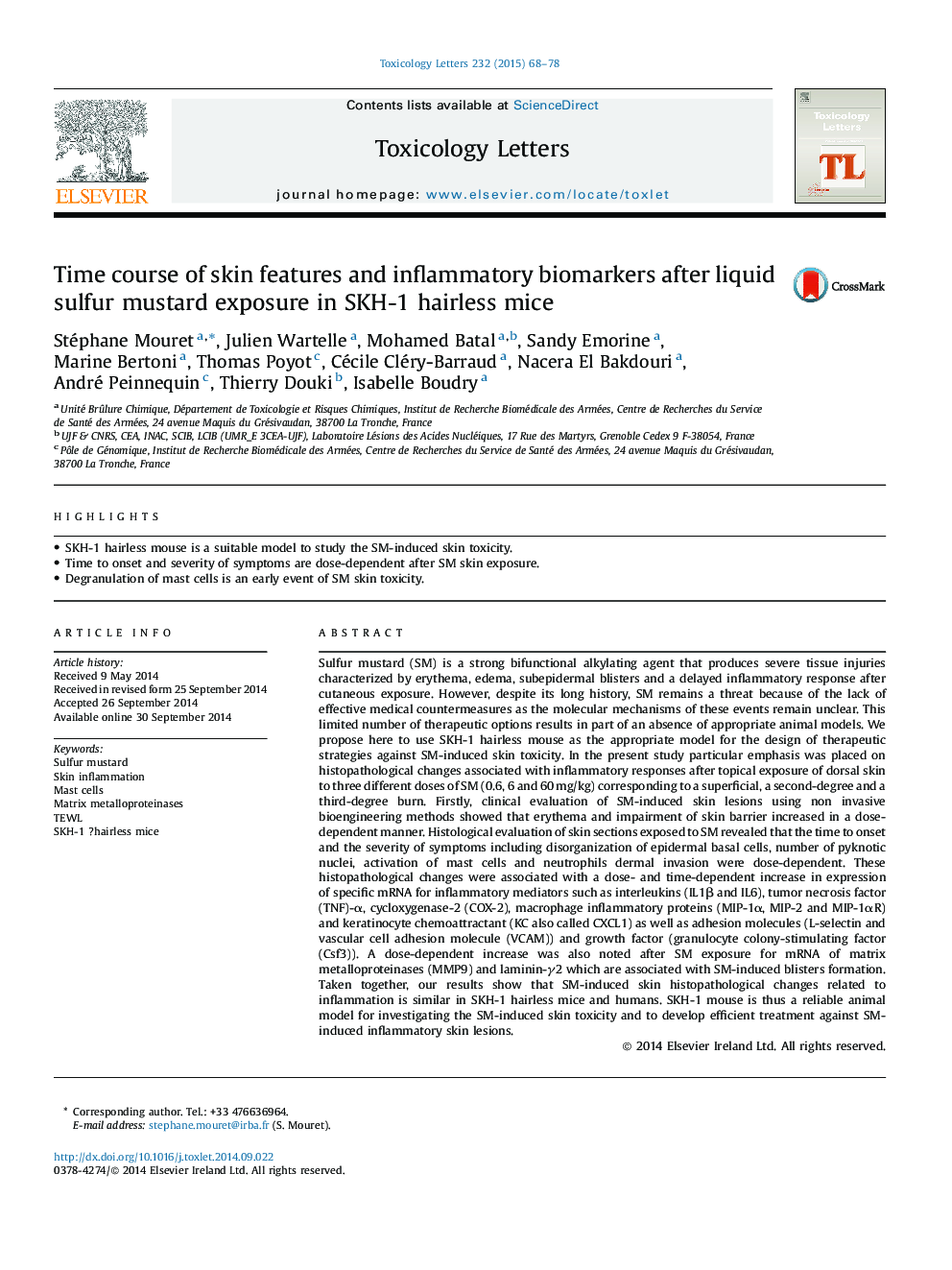| کد مقاله | کد نشریه | سال انتشار | مقاله انگلیسی | نسخه تمام متن |
|---|---|---|---|---|
| 5860026 | 1133164 | 2015 | 11 صفحه PDF | دانلود رایگان |

- SKH-1 hairless mouse is a suitable model to study the SM-induced skin toxicity.
- Time to onset and severity of symptoms are dose-dependent after SM skin exposure.
- Degranulation of mast cells is an early event of SM skin toxicity.
Sulfur mustard (SM) is a strong bifunctional alkylating agent that produces severe tissue injuries characterized by erythema, edema, subepidermal blisters and a delayed inflammatory response after cutaneous exposure. However, despite its long history, SM remains a threat because of the lack of effective medical countermeasures as the molecular mechanisms of these events remain unclear. This limited number of therapeutic options results in part of an absence of appropriate animal models. We propose here to use SKH-1 hairless mouse as the appropriate model for the design of therapeutic strategies against SM-induced skin toxicity. In the present study particular emphasis was placed on histopathological changes associated with inflammatory responses after topical exposure of dorsal skin to three different doses of SM (0.6, 6 and 60 mg/kg) corresponding to a superficial, a second-degree and a third-degree burn. Firstly, clinical evaluation of SM-induced skin lesions using non invasive bioengineering methods showed that erythema and impairment of skin barrier increased in a dose-dependent manner. Histological evaluation of skin sections exposed to SM revealed that the time to onset and the severity of symptoms including disorganization of epidermal basal cells, number of pyknotic nuclei, activation of mast cells and neutrophils dermal invasion were dose-dependent. These histopathological changes were associated with a dose- and time-dependent increase in expression of specific mRNA for inflammatory mediators such as interleukins (IL1β and IL6), tumor necrosis factor (TNF)-α, cycloxygenase-2 (COX-2), macrophage inflammatory proteins (MIP-1α, MIP-2 and MIP-1αR) and keratinocyte chemoattractant (KC also called CXCL1) as well as adhesion molecules (L-selectin and vascular cell adhesion molecule (VCAM)) and growth factor (granulocyte colony-stimulating factor (Csf3)). A dose-dependent increase was also noted after SM exposure for mRNA of matrix metalloproteinases (MMP9) and laminin-γ2 which are associated with SM-induced blisters formation. Taken together, our results show that SM-induced skin histopathological changes related to inflammation is similar in SKH-1 hairless mice and humans. SKH-1 mouse is thus a reliable animal model for investigating the SM-induced skin toxicity and to develop efficient treatment against SM-induced inflammatory skin lesions.
Journal: Toxicology Letters - Volume 232, Issue 1, 5 January 2015, Pages 68-78